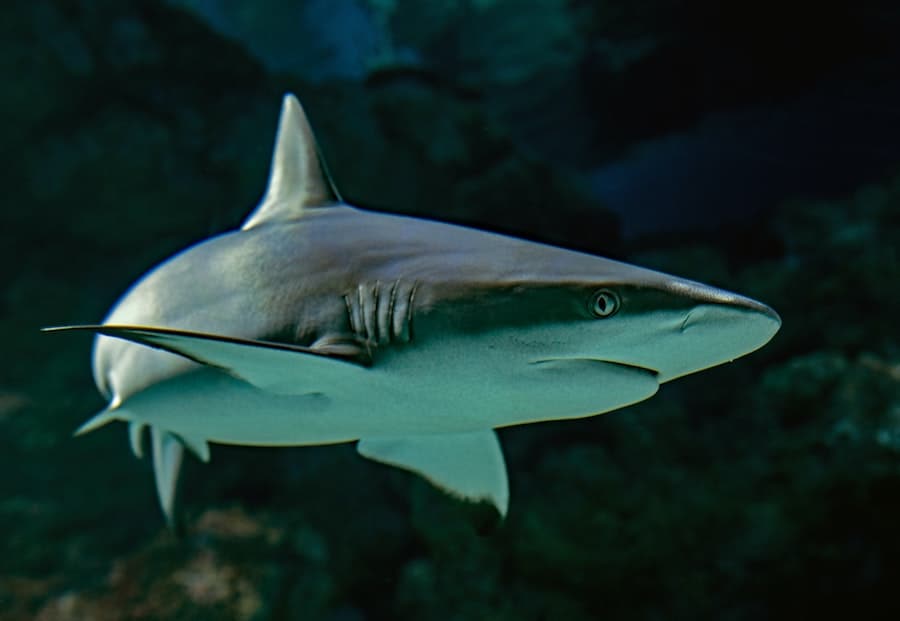You might naturally think a powerful animal like a shark has sizeable bones, and not only that but a strong bone density too, particularly around the jaw. But actually, do sharks have bones at all? Here’s where we investigate…
Sharks do not have bones. Instead, sharks have cartilage that forms a skeletal structure. It’s the same type of tissue found in the human ear. Cartilage density differs throughout the shark’s body, it means sharks can be lightweight, fast, and flexible enough to handle their own weight efficiently.
Sharks are largely hidden in the depths of the ocean. With few people actually daring to take a closer look at this wild animal and even scarier with its menacing jaws.
But do sharks actually have bones? And if not, then what do they have? …
Do Sharks Have Bones?
As strange as it may sound, a shark’s body does not contain a single bone. Instead, a shark’s skeletal structure is made entirely of cartilages.
This is why sharks fall into the category of cartilaginous animals.
Cartilaginous animals are those whose skeletons are entirely made up of cartilages.
Therefore, sharks also fall into the category of Chondrichthyes fish – which means “Cartilage fish” as opposed to Osteichthyes, which means bony fishes.
There are mistaken reports that a shark’s body contains up to 356 bones. Some people and regions even believe that a shark’s teeth are made out of bone, which is also not the case – more on that shortly.
This is also the reason you won’t find any fossils related to a sharks bone skeleton. Only their teeth fully preserve as fossils.
So first, this brings us to the question of what do sharks have instead of bones?

What sharks have instead of bones
Unlike most vertebrate animals – even us humans, sharks have a lightweight structure of cartilages. Some often mistake cartilage to be bone.
To make it even clearer, here’s a detailed explanation.
You can understand the difference between bone and cartilage in your own body.
Simply trying to bend your forearm, or your thigh is impossible. (don’t try it!), you just cannot do it.
This is because we have bones, and bones are strong, rigid, and inflexible.
We do have areas that are flexible though. Your ear will bend and flex. Your nose to some extent too.
This is because these two areas are made out of cartilages. Cartilages are much more flexible than bones.
Cartilage is a rubbery tissue framework, it can often harden into bone. This is the reason why newborns have rubbery and flexible legs when they begin to walk.
This is when the bones have not fully ossified around the cartilage core.
But with a shark, no bones are growing, or will ever grow. Their entire structure depends on cartilages. Cartilages still provide enough support and strength for structures to form.
Cartilage in sharks body is very well structured. Enough to offer this animal all the strength and capabilities to do what it needs to achieve in the water.
Cartilage density in various areas of the shark
Some parts of the shark’s body have heavier or denser cartilage than other areas.
A shark’s vertebrate has much denser cartilages than its outer structure. So different parts of the body have variable densities of cartilages.
A shark’s jaw is also made out of cartilage, again in a much denser form than found in other areas of the body.
a shark’s skull is not made of bone
Regarding a shark’s skull, they are called chondrocranium. The word “chondro” is derived from the word Chondrichthyes.
Just as the legs of newborn humans and during very early life exhibit flexibilities which can be seen when a baby is learning to walk. A baby’s head is also in a delicate stage of chondrocranium.
But as humans grow our body parts – including our skulls, form bones as an inner layer of these cartilages.
Is a shark’s jaw made of bone?
A shark’s jaw is not connected to its skull.
The cartilage support a jaw requires (and parts of the backbone) needs to be stronger. This is provided by blocks which, due to their structure, are described as “Tesserae”.
A shark’s Tessellated cartilage is a mosaic of small mineralized blocks of calcium that give greater structural support. But at the same time, Tesserae are very light and flexible – just like cartilage.
The majority of sharks have only one layer of these tesserae blocks. A minority of sharks can have more than one, or even up to five layers of these blocks.
The more layers, the more strength the shark will have. This provides strength sufficient enough to bite into and break up its prey.
Overall, these layers are incredibly strong and sturdy.
Are shark’s teeth made of bone?
With jaws come teeth, and similar to humans and many other species, the teeth of a shark are not attached to its jaw.
Instead, the teeth of sharks are attached to their gums. These teeth are made up of tissue called “dentin”, or dentine. Which is not the same as bone.
This stronger and more dense tissue on the teeth tends to fossilize very well.
White teeth that you might find fossilized are usually from a recently dead shark, whereas darker teeth are fossilized teeth.
Sharks also have something called “dermal denticles”, also called “skin teeth”. These teeth can also fossilize well. Sharks also have multiple rows of teeth that will keep appearing to replace lost and old or broken teeth.
But sharks are a large and powerful creature, so why no bones? Let’s fill that detail in as well since there is a reason behind every creation.
Why sharks don’t have bones
Sharks are often large and heavy animals. On average, a shark can weigh up to 8,000 pounds.
Surprisingly, if a shark was to become beached, it’s likely to end up suffocating under its own weight.
This is because sharks have no ribs.
So although being huge and powerful, sharks suffocate under their own body weight, and if out of the water they would struggle to cope with their own weight.
This is one of the reasons why by nature, sharks don’t have bones. here’s a video which echoes what I’ve discussed above.
Would having bones be better for sharks?
Cartilage is very light and flexible. This lightweight and flexibility allow sharks to move around and handle themselves extremely quickly and effortlessly. It also helps sharks to conserve energy they might otherwise expend maneuvering a heavier bone-filled body.
Sharks need to be fast in order to catch their prey quickly and efficiently. Bones would not enable them to do that, but cartilage does.
More shark information
If you’re interested in this topic, you might also be interested in whether shark have tongues?
If not then take a look at the wealth of other nature related articles on rangerplanet.com
